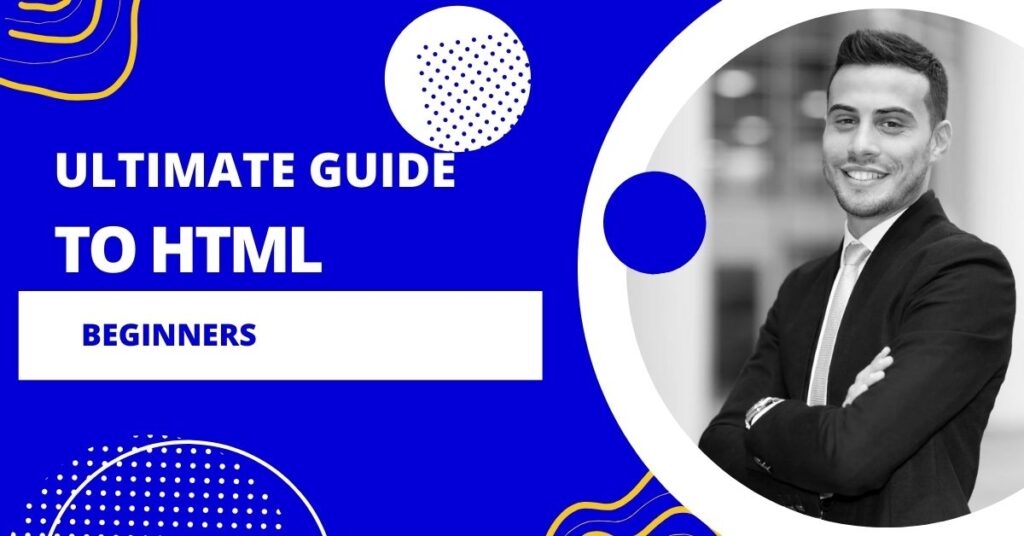HTML (Hypertext Markup Language) and CSS (Cascading Style Sheets) are the foundational technologies for building web pages. HTML provides the structure of the page, while CSS defines its style and layout. This guide will introduce you to the basics of HTML and CSS, providing you with the knowledge needed to start creating and styling your own web pages.

1. Understanding HTML
What is HTML?
HTML is a markup language used to create the structure of web pages. It consists of a series of elements, which are represented by tags. These elements define the content and layout of a web page.
Basic HTML Structure
An HTML document has a basic structure that includes the following elements:
<!DOCTYPE html>
<html>
<head>
<title>My First Web Page</title>
</head>
<body>
<h1>Hello, World!</h1>
<p>This is a paragraph of text.</p>
</body>
</html>Key HTML Elements
<!DOCTYPE html>: Declares the document type and version of HTML.<html>: The root element of an HTML document.<head>: Contains meta-information about the document, such as its title and links to stylesheets.<title>: Sets the title of the document, displayed in the browser’s title bar.<body>: Contains the content of the web page.
Common HTML Tags
<h1>to<h6>: Headings, with<h1>being the most important and<h6>the least.<p>: Paragraph.<a>: Anchor tag, used to create hyperlinks.<img>: Image tag, used to embed images.<ul>and<ol>: Unordered and ordered lists, respectively.<li>: List item, used within<ul>or<ol>.
2. Introduction to CSS
What is CSS?
CSS is a stylesheet language used to describe the presentation of a document written in HTML. It allows you to control the layout, colors, fonts, and overall appearance of your web pages.
Basic CSS Syntax
CSS consists of selectors and declarations. A selector targets an HTML element, and the declaration defines the style properties for that element.
cssCopy codeselector {
property: value;
}
Inline, Internal, and External CSS
- Inline CSS: Styles applied directly within an HTML element using the
styleattribute.htmlCopy code<h1 style="color: blue;">Hello, World!</h1> - Internal CSS: Styles defined within the
<style>tag in the<head>section of the HTML document.htmlCopy code<style> h1 { color: blue; } </style> - External CSS: Styles defined in an external stylesheet and linked to the HTML document using the
<link>tag.htmlCopy code<link rel="stylesheet" href="styles.css">
Common CSS Properties
color: Sets the text color.background-color: Sets the background color of an element.font-size: Sets the size of the text.margin: Sets the outer spacing of an element.padding: Sets the inner spacing of an element.border: Sets the border around an element.
3. Building a Simple Web Page
Step-by-Step Guide
1. Create the HTML File:
<!DOCTYPE html>
<html>
<head>
<title>My First Web Page</title>
<link rel="stylesheet" href="styles.css">
</head>
<body>
<header>
<h1>Welcome to My Website</h1>
<nav>
<ul>
<li><a href="#home">Home</a></li>
<li><a href="#about">About</a></li>
<li><a href="#contact">Contact</a></li>
</ul>
</nav>
</header>
<section id="home">
<h2>Home</h2>
<p>This is the home section.</p>
</section>
<section id="about">
<h2>About</h2>
<p>This is the about section.</p>
</section>
<section id="contact">
<h2>Contact</h2>
<p>This is the contact section.</p>
</section>
<footer>
<p>© 2024 My Website</p>
</footer>
</body>
</html>2. Create the CSS File
body {
font-family: Arial, sans-serif;
margin: 0;
padding: 0;
background-color: #f4f4f4;
}
header {
background-color: #333;
color: white;
padding: 1rem;
}
nav ul {
list-style: none;
padding: 0;
}
nav ul li {
display: inline;
margin-right: 10px;
}
nav ul li a {
color: white;
text-decoration: none;
}
section {
padding: 1rem;
margin: 1rem;
background-color: white;
border-radius: 5px;
}
footer {
text-align: center;
padding: 1rem;
background-color: #333;
color: white;
}Explanation
- HTML Structure: The HTML file defines the structure of the web page, with sections for the header, navigation, content, and footer.
- CSS Styling: The CSS file styles the HTML elements, setting the font, colors, layout, and other visual properties.
4. Best Practices
Writing Semantic HTML
Semantic HTML uses elements that clearly describe their meaning in a human- and machine-readable way. Examples include <header>, <footer>, <article>, and <section>.
Organizing CSS
- Use Comments: Add comments to explain sections of your CSS.
- Group Related Styles: Group related styles together for better readability.
- Use Consistent Naming Conventions: Follow a consistent naming convention for classes and IDs.
Responsive Design
Ensure your web pages look good on all devices by using responsive design techniques, such as flexible grid layouts, media queries, and responsive images.
5. Learning Resources
Online Tutorials and Courses
- MDN Web Docs: Comprehensive documentation and tutorials on HTML, CSS, and JavaScript.
- W3Schools: Beginner-friendly tutorials and references for web development technologies.
- Codecademy: Interactive coding lessons on HTML, CSS, and other web development topics.
Books
- “HTML and CSS: Design and Build Websites” by Jon Duckett: A visually engaging guide to HTML and CSS.
- “Learning Web Design” by Jennifer Niederst Robbins: A beginner’s guide to web design and development.
Community and Support
- Stack Overflow: A popular forum for asking and answering coding questions.
- Reddit: Subreddits like r/webdev and r/learnprogramming offer community support and resources.
Conclusion
HTML and CSS are the building blocks of web development. By mastering these technologies, you can create and style your own web pages, bringing your ideas to life on the web. With the foundational knowledge from this guide, you’re well on your way to becoming a proficient web developer. Keep practicing, exploring, and learning to enhance your skills and stay updated with the latest trends and best practices in web development.



